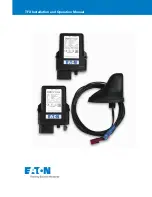
ADCP-75-110
•
Issue 2B
•
July 2001
Page 13
©
2001, ADC Telecommunications, Inc.
Table 4. Terms and Definitions, continued
TERM
DEFINITION
Digital
Remote Unit
The
unit that interfaces the in-building user to the Digivance optical
transport.
Digitized
RF Signal
The
RF signal in a digitized form.
Forward
Path Signal
A
signal that travels from the base station to the cell phone.
Major
Alarm
An
alarm condition that applies when any fault (except high
temperature)
occurs.
Minor
Alarm
The
alarm condition that applies when a high temperature condition
occurs.
(> 50º C/122º F)
Mute
To
force a forward path RF signal to a “no signal” state.
Normal
State
The
operating state after power-up is completed and no faults are
detected.
Port
An
RF, optical, or electrical interface point.
Port
Alarm
A
fault that affects only the unit or units connected to that port.
Indicates
no optical input to port.
Power-Up
State
The
period between the application of power to a unit and the normal
state.
This period includes time for circuit stabilization and
initialization
operations.
Reverse
Path Signal
A
signal that travels from one or more cell phones to the base station.
Transport
Alarm Signal
An
alarm signal transported over the fiber optic link.
Unit
Alarm
A
fault within a unit that usually affects all connected ports.
1.6 Specifications
Refer
to Table 5 for the Digivance ICS system specifications. All specifications apply after
five
minute warm-up period.
Table 5. System Specifications
PARAMETER
SPECIFICATION
REMARKS
Optical – All Units
Fiber
type
Multimode
50 or 62.5 micron core
Two
fibers per link
Maximum
Fiber Length
500
m (1,641 ft)
750
m (2461 ft)
With
62.5 micron core
With
50 micron core
Optical
Output Power
–10
to +4 dBm
Optical
Wavelength
850
nm
Environmental
Operating
Temperature
0º
to 50º C (32º to 122º F)
Storage
Temperature
–30º
to +70º C (–22 to 158º F)
Humidity
No
condensation
Weather
resistance
Indoor
installation only
(continued)
Содержание Digivance
Страница 8: ......













































